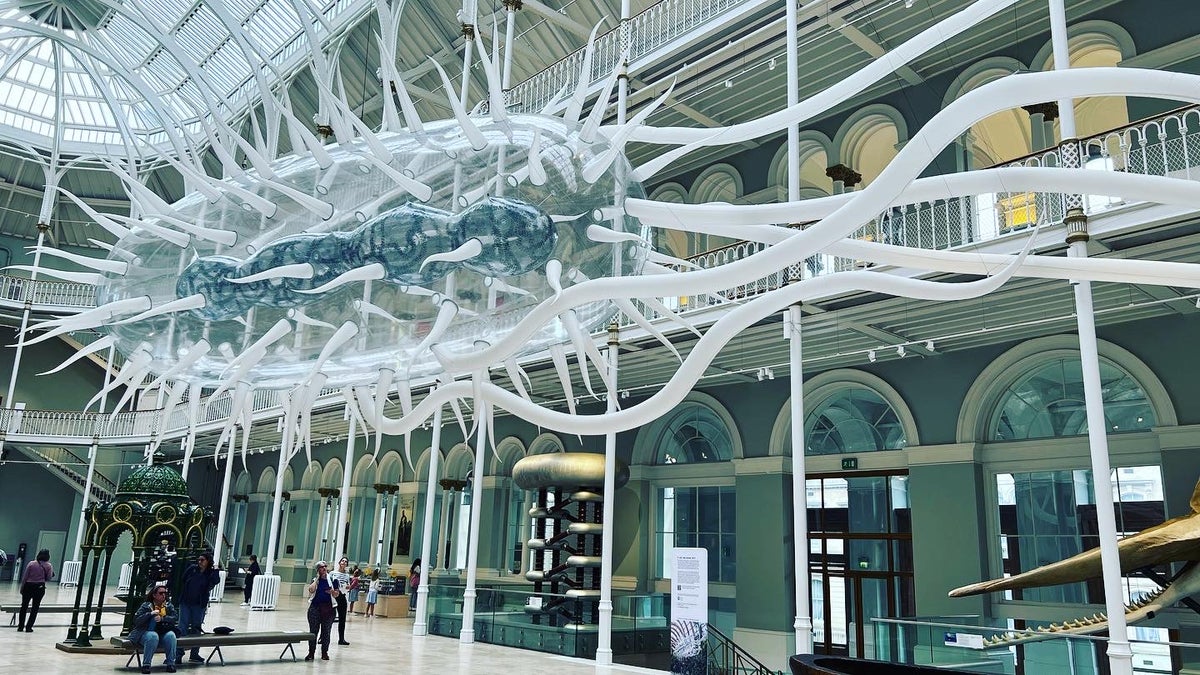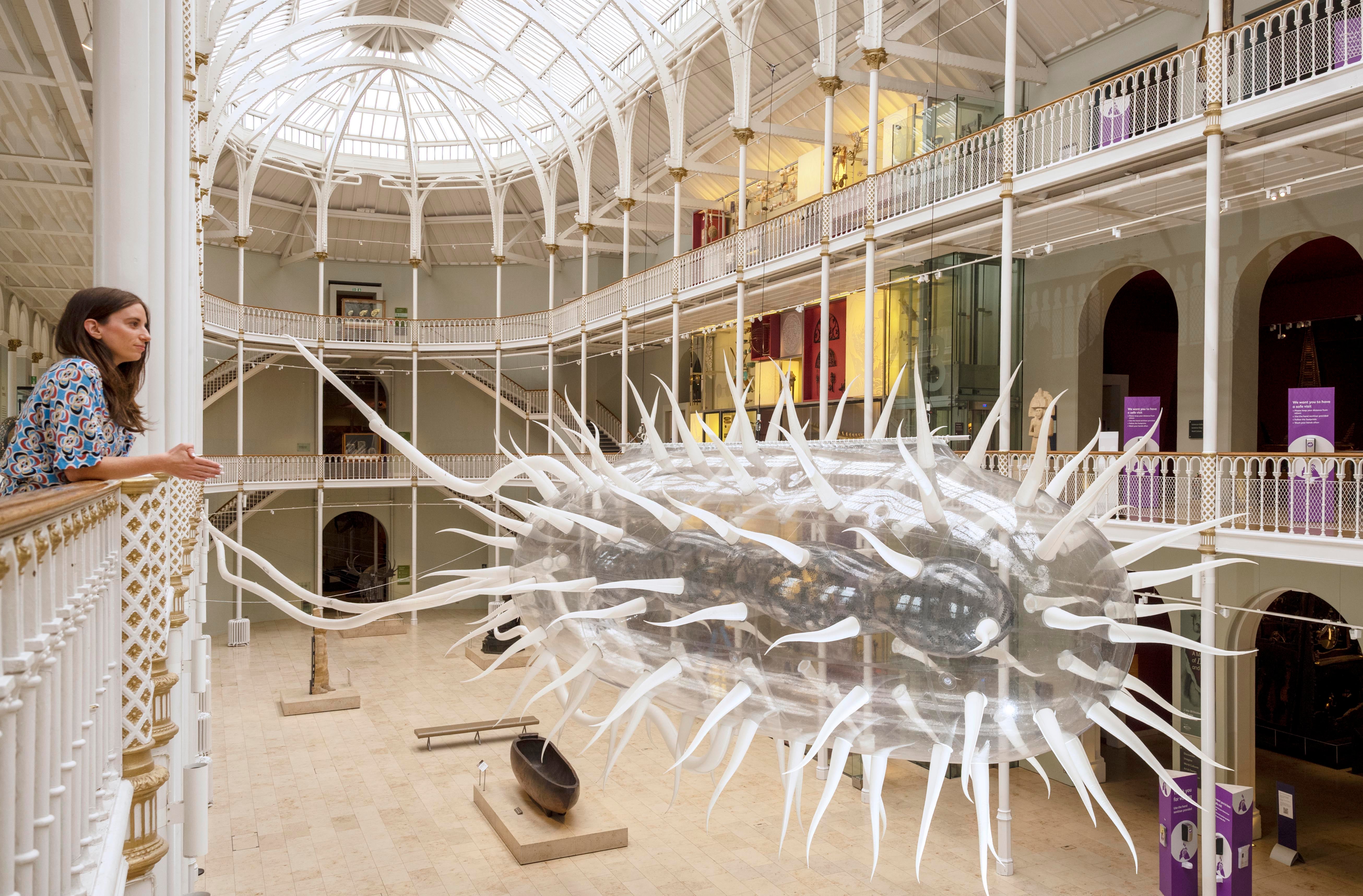
A 90ft long, inflatable sculpture of a bacterium has been suspended from the ceiling of the National Museum of Scotland’s grand gallery.
The artwork, by Bristol-based Luke Jerram, represents Escherichia coli, commonly known as E.coli, as five million times bigger than its real life size.
The bacteria are found in the environment, foods, and intestines of people and animals.
The colossal sculpture is on display as part of the Edinburgh Art Festival which runs from July 28 until August 28 at venues across the capital city.

It was made to reflect upon the importance of bacteria for humans and the planet.
Commenting on his work, Mr Jerram said: “Making visible the microscopic world around us, the artwork was made as an experimental object to contemplate.
“When standing next to it, does the bacteria alter our personal sense of scale?
“Does it look scary, beautiful, comical or alien?
“Will audiences be attracted or repelled by it?”

Although some forms of E.coli bacteria can cause illness and even death in humans, the use of bacteria can also be vital to medical research.
Alison Cromarty, head of exhibitions and design at National Museums Scotland said: “We’re delighted to be bringing this spectacular creation to Scotland for the first time.
“It’s great to have it on display during the festival period and particularly as part of the Edinburgh Art Festival.”
This giant inflatable sculpture was made for the Krebs Fest, a celebration of the scientific research of Sir Hans Krebs, who won the Nobel Prize for Physiology or Medicine in 1953, and presented at University of Sheffield.
The artwork has since been presented in other venues around the UK including the Eden Project, before coming to Edinburgh.







